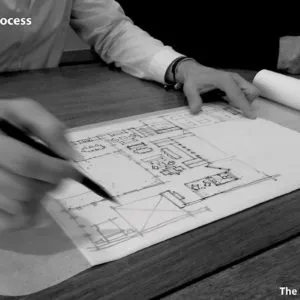Table of Contents
Lessons from the mHouse
Working with the A&D community
The panel processing industry penetrates a wide range of business sectors. You’ll find composite panel products and decorative surfaces in every imaginable environment, ranging from health care and education to residential and office furniture, store fixtures and commercial interiors.
The residential sector in North America, including single-family homes and multi-family apartments and condominiums, is enormous and has great potential. It includes kitchen and bath cabinets, household furniture and closets, organization and storage.
Architects and interior designers will be involved at one point or another in the process — early and often in the case of a custom home such as the mHouse or in the early planning for multi-family and large condo projects. Regardless, if you want your products specified, you will have to educate and inform the A&Ds and, in a general sense, make them feel confident in their decisions to use your products.
Do they have perceptions? They certainly do, and some of them are deep seated and negative. Convince an architect to use a product that ultimately fails, and your chances at future specifications are all but gone. They are careful because they have to be. Their reputations are on the line.
MHouse architect John Vetter and interior designer Amy Carman are remarkable talents. Both are highly educated and are award winners. More than that, they have been blessed with great vision. They are at the top of the food chain when it comes to selecting materials and working with fabricators.
When they ask for detailed shop drawings, which are likely to be modified several times, fabricators should be ready to comply. It’s a requirement, not a request. If there is a barrier to working with the A&D community, it’s that they will change their minds. In the case of the mHouse, their changes were always improvements. At times, John and Amy would not yield to quicker or cheaper routes. They would “insist” with strong convictions, at times appearing stubborn. But they put their signatures on the mHouse. It had to be right.
Panel processors employ technology capable of remarkable precision. Show them what you want, and they can make it to within thousandths of an inch. Obviously, being precise is critical, but A&Ds work on “look and feel.” They need the latitude to make adjustments to achieve the look they want. They don’t want to be encumbered. Fabricators need to know this going in and must work patiently with the A&D team. Custom cabinetmakers have known this all along, which is why architects and designers gravitate to them first. High-speed, high-volume panel processors who want to do business in the A&D world must adapt.
Material suppliers have a difficult but not insurmountable job ahead of them. Considering that architects and designers must be knowledgeable about all materials, getting their attention long enough to know and understand your product is not easy. But it must be done, one at a time if necessary.
The mHouse experiment was all about exposing architect John Vetter and interior designer Amy Carman to all of our industry’s materials. Some they had never heard of before. Few of them have ever been used in their projects.
I was not sure what to expect, but I was amazed at how they saw materials in an entirely different light and deployed them in applications none of us would have imagined. We see thermally fused laminate (TFL) and think cabinet boxes, doors and drawer fronts. John and Amy saw TFL and saw the ceiling of a kitchen. Both of them were truly interested in each and every surface material and panel product and saw opportunities beyond what our industry sees. And therein lies the value of the A&D world. In the end, it comes down to vision.
John Vetter said, “The mHouse is going to surprise and delight.” Now I know what he meant.
All the best,
John Aufderhaar
Publisher






